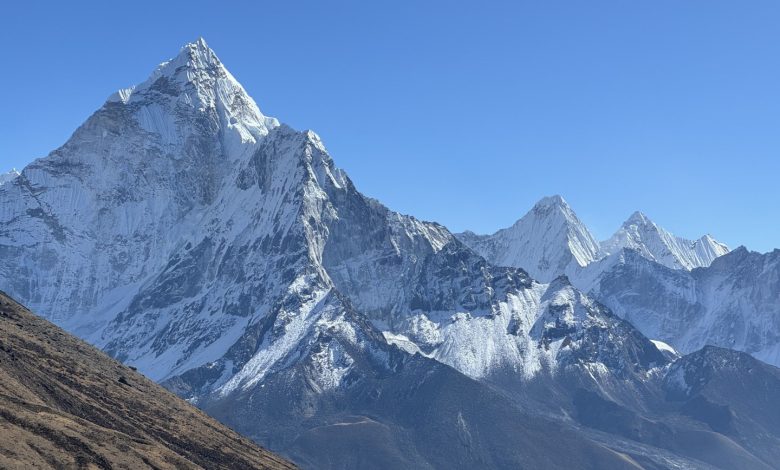Best Mountains to Climb Around the World

From legendary summits in the Himalayas to volcanic giants in South America, the world is home to countless peaks that call out to climbers, trekkers, and explorers. Some of these mountains challenge with technical ascents, while others offer accessible trekking routes with world-class views.
Whether you dream of scaling the highest point on Earth or seeking solitude on a less-traveled peak, this list covers the most iconic and rewarding mountains to climb across the globe.
1.Mount Everest (8,848.86 meters) – Nepal/Tibet
Mount Everest is the undisputed king of all mountains. As the highest peak on Earth, Everest represents the ultimate goal for mountaineers worldwide. Located in the Nepal-Tibet border, its colossal height and legendary status have made it a symbol of human endurance.
Climbing Everest is a massive undertaking that requires years of preparation, acclimatization, and a hefty budget. But even for those who don’t aim to reach the summit, the Everest Base Camp Trek offers a life-changing journey.
This two-week trek takes you through Sherpa villages, Buddhist monasteries, and panoramic viewpoints like Kala Patthar, where you can witness Everest in all its glory.
The best time to trek or climb Everest is during the pre-monsoon (April-May) and post-monsoon (October-November) seasons when the weather is most stable.
2.Mount Kilimanjaro (5,895 meters) – Tanzania
Kilimanjaro is Africa’s tallest mountain and the highest free-standing peak in the world. Unlike many other high mountains, Kilimanjaro requires no technical climbing, making it an ideal goal for ambitious trekkers.
There are several established routes to the summit, including the Marangu, Machame, Lemosho, and Rongai trails. Climbers traverse through diverse ecosystems—rainforests, alpine deserts, and glacial zones—before reaching the snow-capped summit at Uhuru Peak.
The climb typically takes 6 to 8 days, and the best seasons are January to March and June to October. Altitude acclimatization is crucial, as even experienced hikers can suffer from altitude sickness here.
3.Matterhorn (4,478 meters) – Switzerland/Italy
The Matterhorn is one of the most instantly recognizable mountains in the world, thanks to its distinct pyramid shape. Straddling the border between Switzerland and Italy, it towers above the alpine resort town of Zermatt.
Climbing the Matterhorn is a serious challenge. The Hörnli Ridge, the most common route, demands technical rock climbing skills, good fitness, and experience with exposed terrain. Climbers are often roped together and guided for safety.
The climb typically takes 2 days, and the best window is July to early September, when snow and ice conditions are minimal.
4.Aconcagua (6,961 meters) – Argentina
Located in the Andes, Aconcagua is the highest mountain outside of Asia and the tallest in the Southern and Western Hemispheres. It’s often considered one of the Seven Summits and appeals to both mountaineers and seasoned trekkers.
Aconcagua has a non-technical route via the Normal Route, but its extreme altitude still requires careful acclimatization. There are also more demanding routes for experienced climbers, such as the Polish Glacier Route.
The best season to climb is from December to February, during the Southern Hemisphere summer.
5.Annapurna (8,091 meters) – Nepal
Annapurna is the tenth-highest mountain in the world and part of the stunning Annapurna Massif in north-central Nepal. The main peak, Annapurna I, is known for its steep south face and historically high fatality rates, making it one of the most challenging 8,000-meter climbs.
However, the region offers many rewarding trekking alternatives for non-climbers. The Annapurna Circuit Trek is one of the most popular treks in Nepal, circumnavigating the massif through dramatic landscapes ranging from subtropical forests to arid highlands. It includes crossing the iconic Thorong La Pass (5,416m) and offers views of Annapurna, Dhaulagiri, Manaslu, and Machapuchare.
The best time for trekking in the Annapurna region is during spring (March–May) and autumn (September–November).
6.Denali (6,190 meters) – Alaska, USA
Denali, formerly known as Mount McKinley, is the tallest mountain in North America and one of the coldest climbs on the planet. Located in Alaska’s Denali National Park, it poses a formidable challenge due to unpredictable weather, crevasses, and severe temperatures.
Climbers usually follow the West Buttress Route, which, while non-technical, demands significant endurance and glacier travel experience. Expeditions take 2 to 3 weeks, and the summit success rate hovers around 50%.
The prime climbing season is May to early July, when weather conditions are relatively stable.
7.Mount Elbrus (5,642 meters) – Russia
Mount Elbrus is the highest peak in Europe and another of the Seven Summits. Located in the Caucasus Mountains of Russia, Elbrus is a dormant volcano with two summits.
The south route is the most popular and features cable cars that ease the approach to base camp. Although it’s a glacier climb, it’s not highly technical, making it suitable for trekkers with basic mountaineering skills and proper acclimatization.
Most expeditions take 5 to 7 days, and the best time to climb is between June and September.
8.Mount Fuji (3,776 meters) – Japan
Mount Fuji is Japan’s highest and most iconic mountain, renowned for its symmetrical cone and cultural significance. Every year, thousands of pilgrims and tourists climb Fuji during the official season.
There are four main routes—Yoshida, Subashiri, Gotemba, and Fujinomiya—with the Yoshida Trail being the most popular. The climb requires no technical gear and can be completed in a day or two.
The official climbing season is July and August, when trails are open and mountain huts operate. The experience includes sunrise views from the summit, known as Goraiko, which is a spiritual highlight for many.
9.Ama Dablam (6,812 meters) – Nepal
Often referred to as the “Matterhorn of the Himalayas,” Ama Dablam is one of the most beautiful mountains in the world. Located in the Everest region, it’s admired for its steep ridges and hanging glaciers.
Unlike Everest, Ama Dablam is a technical climb, requiring experience in rock, ice, and mixed climbing. The Southwest Ridge is the standard route and involves fixed ropes and high camps.
Although not the tallest, it’s a prestigious peak among experienced alpinists. The best time to climb Ama Dablam is in autumn (October–November) or late spring (April–May).
10.Mount Vinson (4,892 meters) – Antarctica
Mount Vinson is the highest peak in Antarctica and a remote, extreme environment that few climbers experience. The challenge lies not in technical difficulty but in logistics and severe cold.
Reaching the base camp requires chartered flights and specialized equipment. The climb itself usually takes 12 to 14 days, with most teams ascending via the Branscomb Shoulder Route.
Temperatures can plunge below -30°C, and climbers must be self-sufficient and well-prepared. The climbing season is December to January, during Antarctica’s brief summer window.
Final Thoughts: Choosing the Right Mountain for You
Whether you’re a first-time trekker dreaming of Kilimanjaro or an experienced alpinist ready for Denali or Annapurna, the world offers peaks for every ambition and skill level. Climbing a mountain is not just a physical challenge—it’s a spiritual journey, a connection with nature, and a lesson in resilience.
For those who want a rich cultural experience combined with majestic mountain views, Nepal stands out with its iconic treks. You don’t have to summit Everest or Annapurna to feel their power. Treks like the Everest Base Camp or the Annapurna Circuit offer world-class Himalayan experiences accessible to fit and determined trekkers.
Always respect the mountains. Train well, climb responsibly, and savor the journey as much as the summit.





